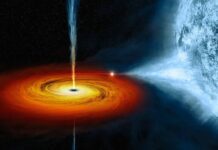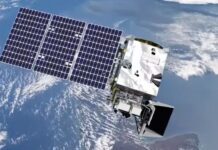The presence of water on the moon’s surface was discovered by India’s Chandrayaan-1 mission, which was one of the project’s most important discoveries. A probe aboard India’s Chandrayaan-2 orbiter (second lunar mission) has not only confirmed its predecessor’s breakthrough but has also paved the door for future lunar exploration. According to ISRO experts involved in both Lunar projects, the Chandrayaan-2 data will be utilized to create a lunar water map, which will benefit future lunar missions.
The NASA-funded Moon Mineralogy Mapper(M3) experiment carried out on the Chandrayaan-1 satellite gave the first evidence for surface water. While this NASA mission found signs of water at the lunar poles, its results were questioned due to M3’s (an imaging spectrometer) limited wavelength coverage. A Spectrometer’s primary function is to collect light (reflected from a surface) and display it as a graph. The M3’s wavelength of 0.7 to 3 microns, on the other hand, was insufficient to confirm and confirm the presence of water on the moon.
“We had only scratched the surface with M3, but we required double and triple confirmation. The data from the old M3 sensor and the new Chandrayaan 2 sensor have matched, which is a big breakthrough for us. Chandrayaan-2’s orbiter has a 5 micron (wider spectrometer), hence it unequivocally verifies Chandrayaan-1’s findings, according to Dr. Mylswamy Annadurai, former Director of ISRO’s UR Rao Satellite Center.
He went on to say that the Chandrayaan 2 orbiter (in lunar orbit since Sept 2019) has the ability to create a moon topography map that displays rocks, craters, ice deposits, water traces, and other features. Dr. Annadurai, often known as India’s “Moon Man,” expressed hope that such a lunar map would aid future Indian lunar exploration missions as well as the greater world scientific community.
“The Chandrayaan-2 spectrometer can identify the presence of water (H2O) molecules as well as Oxygen-Hydrogen atoms held together as Hydroxide (OH). The dips on the graph are plainly visible in the new spectrometer photos, according to DR. A S Kiran Kumar, former Chairman of ISRO.
He claims that wavelength separation in the 3.1 and 3.2-micron range allowed him to discriminate between water and Hydroxide. Water is detected in the form of water molecules and hydrides, which can be found in minerals and hydrates. Via its 100km altitude orbit, ISRO’s orbiter can map practically the whole moon, and more data can be obtained from repeated observations, he says. Given that water (H2O) and hydroxide (OH) do not exist in isolation on the lunar surface, this opens up opportunities for scientific research and analysis. Water is found in molecular form in most minerals and hydrates, whereas hydroxides are found as moisture in minerals and hydrates.
India’s second lunar mission, Chandrayaan-2, was only partially successful, as the lander “Vikram” was unable to reach the moon’s South Pole as planned. Instead, the lander and the rover it contained crashed, eliminating the possibility of completing a short-term, on-surface study. However, the orbiter, which circles the moon at a height of 100 kilometers and a speed of around 1 kilometer per second, continues to operate and is anticipated to do so for many more years. Chandrayaan-1, India’s first lunar probe, was launched in 2008 and operated for nearly a year before losing contact with the orbiter.
Apart from it, you can read these articles Goodyear Viva 3, High sleeper bed, Cash for Cars, F95zone, Aloe Vera Juice, the 100 season 8, Salvation Season 3, Shadowhunters season 4, Poldark season 6, Good Place season 5, Madison beer net worth, Gravity Falls season 3, Hunter x Hunter season 7, Marvelous Mrs. Maisel Season 4, Bloodborne 2, Derry Girls season 3, highest paid CEO, and, Bhushan Kumar net worth, you can follow our Entertainment, Health, Technology, and Business Category.














![Technical Aspects of 844 Area Code in 2024 [Detail Guide] 844 Area Code](https://articleify.com/wp-content/uploads/2024/01/844-Area-Code-150x150.jpg)














